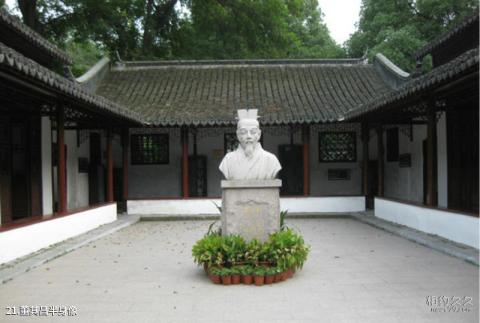
Introduction to the bust of Dong Qichang: Dong Qichang (1555-1636) was a calligrapher and painter of the Ming Dynasty. The courtesy name is Xuanzai, and his nickname is Sibai and Xiangguang layman. A native of Huating (now Maqiao, Minhang District, Shanghai), he once lived in Songjiang. In the 17th year of Wanli's reign, he was a Jinshi and was awarded the title of Editor of the Hanlin Academy. He was promoted to Minister of Rites in Nanjing and was given the posthumous title of Wenmin after his death. He is good at painting landscapes, following the example of Dong Yuan, Ju Ran, Huang Gongwang and Ni Zan. His brushwork is elegant and neutral, quiet and sparse; his ink is bright, clean and meaningful, gentle and indifferent; his green and green colors are simple and elegant. He used Zen Buddhism as a metaphor for painting, advocated the "North and South School" theory, and was an outstanding representative of the "Huating School". His paintings and painting theory had a great influence on the painting circles in the late Ming and early Qing dynasties. Calligraphy has come and gone in Jin and Tang Dynasties, and has its own style, capable of poetry and prose. Existing works include "Dwelling in the Rock", "Eight Scenes of Autumn", "Zijintang Picture", etc. He is the author of "Essays on Painting Zen Rooms", "Collected Works of Rongtai", etc., and has engraved "Tie of Xihongtang".
